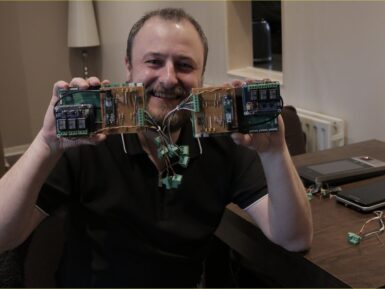
Grove - Hall Sensor
Sold outThe Hall sensor uses the Hall Effect, which is the production of a voltage difference across an electrical conductor, transverse to an electric current in the conductor and a magnetic field perpendicular to the current.
Overview
There is a continuous-time switch on this Grove module. The output from the module switches from low (turns on) when a magnetic field (south polarity) is perpendicular to the Hall sensor and when it passes the operate point threshold BOP it switches to high (turns off) when the magnetic field disappears.
The twig can for example be used to measure RPM of a wheel or a motor.
Features
- Grove Compatible Interface
- 400ns transition period for rise and fall.
- Continuous-time hall effect sensor
- Reverse current protection
Tech specs
Specifications
|
Item |
Min |
Typical |
Max |
Unit |
|
Supply Voltage |
3.8 |
5.0 |
24 |
V |
|
Supply Current |
4.1 |
- |
24 |
mA |
|
Operating Temperature |
-40 |
- |
85 |
ºC |
Get Inspired
trying to understand how to convert serial data to digital data onb arduino micro

Whether granting access to public transit or restricting unauthorized personnel in buildings, NFC card readers can be extremely useful. Although most might not consider how they work – and simply happy getting through a turnstile – there’s a lot going on behind the scenes. In his video, Daniel Raines shows off a pair of prototype access control units (ACUs) that he’s constructed. The two networked devices are each based on a Raspberry Pi Compute Module 4 along with an Arduino Micro that controls six relays to allow or deny entry, provide feedback, fire, and lock up. More details on the project can be found in Raines' clip below.






